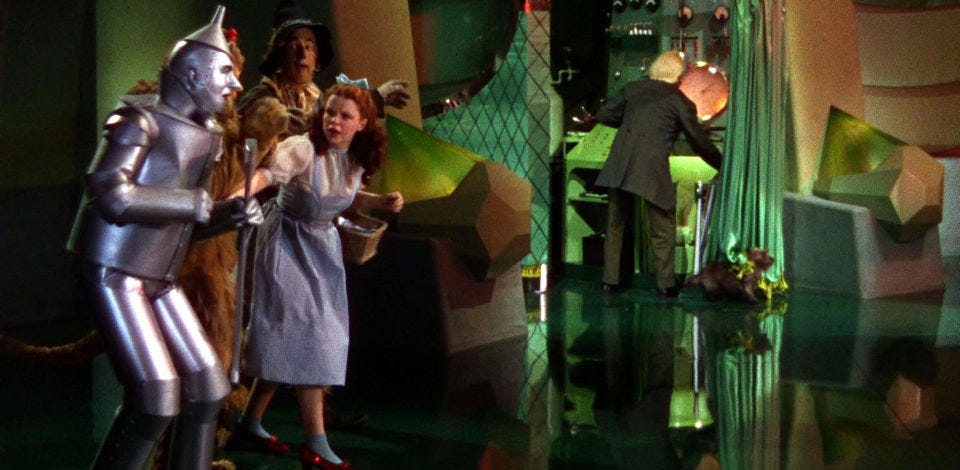Fed Funds: Language and the Wicked
The Fed hikes another 75 bps, but then the words “cumulative” and “lags” started a commotion around forecasting.
The Fed announced the expected 75 bps increase in target fed funds, but then the waterboarding of the language began with parsing of the words “cumulative” and “lags” dominating the follow-on back and forth.
The Wizard of Oz fed watchers meeting in the above picture depicts the following dialogue as Powell madly works the controls:
The Lion: The FOMC scares me.
Tin Man: Just keeping chopping away Jay. Inflation will come down.
Straw Man: If I only knew what oil would do.
The Wizard: I will pull this “lag” and “cumulative” lever and then pull the “premature” lever a few times and try to get past this meeting. What I need is a witch’s broom to fly out of here.
Dorothy: I better click my heels together and sell. There’s no place like cash.
The noisy reaction from the Fed release to the Powell presentation ended up decidedly negative for equities through the close. That was after a very positive initial reaction. The bulls seemed to get rewarded initially as the use of “cumulative tightening” and consideration of the phrase “lags with which monetary policy effects economic activity” was being read as offering flexibility for a pause. The press release was exciting for bulls, and then the Q&A began. Basically, Powell released some doves in the text, and then he brought in the bear, who ate the doves.
Interestingly, the September release by the Fed essentially shows an FOMC midrange fed funds consensus of around 4.4% to end the year. That means a 50 bps area hike for a fed funds move in December (to 4.5% upper target) was more or less consensus at the FOMC. The excitement today was more in the stock market swings than in the release itself.
When Powell said “premature” to talk about “a pause,” the language rained on the initial parade. We watched the Dow plunge from the start of the call through the end of the call and its immediate aftermath. In the end, the reality is that inflation is well in excess of fed funds, labor is very tight, and oil is high. There are still cost increases working their way through the system – once again “at a lag” there also. One CNBC newscaster said that Powell used some variation of the word lag seven times, so that just gets back to the same old reality that Fed can do what it wants when it wants and come up with reasons to do it. Time lags as an explanation is the oldest swing factor in the book. That includes for companies making investments.
The word “cumulative” when taken in tandem with “lags” implies patience and flexibility. After all, you need to see how these hikes play out. The problem remains that the fed funds upper target of 4.0% is not even half of headline CPI (8.2%) and over 2 points below headline PCE (6.2%). Core CPI of 6.6% and core PCE of 5.1% only makes you feel a little better. The bear counterpoint would be “of course it lags, but you also lagged badly to start this tightening cycle.”
The forward-looking mantra the market likes to use (as opposed to “data dependent”) gets you back to the old debate on the direction of the variables. We had JOLTS data this week that was somewhat inflationary in tone and the payroll numbers are this Friday. Tight labor and more aggressive labor desires are a wildcard. Price discovery for the next round of orders, capex needs, and freight and transport contracts are underway. Labor deals are getting worked on. Inventories are in better balance in aggregate now, but some industries may want to sustain higher inventories after all the disruptions. Some are overstocked.
It is a mixed picture.


